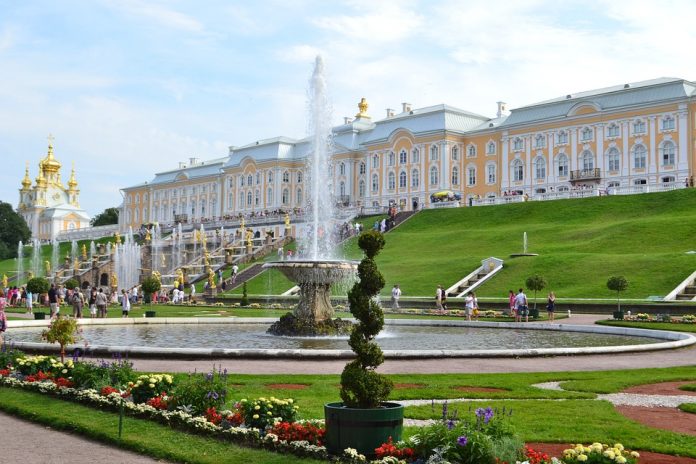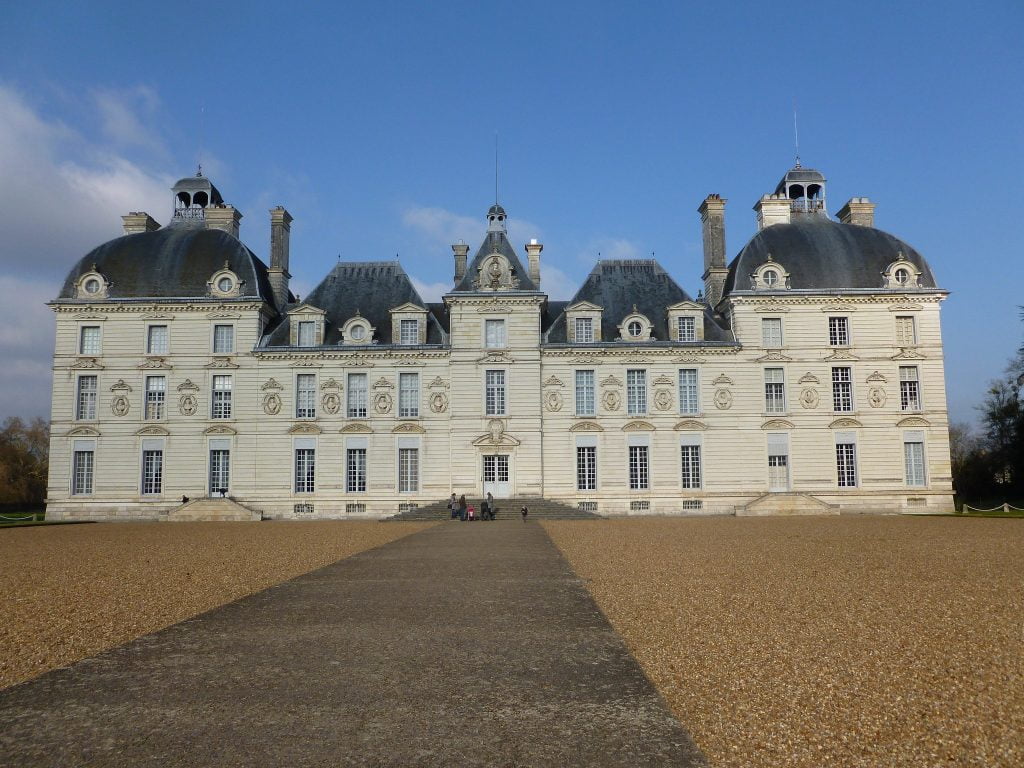Peterhof Palace is an expansive compound of glorious architecture from the height of the Russian Empire. It’s a mighty edifice that lets you delve into the magical world of the Russian Tsardom. Famous for its magnificent fountains and sculptures, the palace has managed to withstand years of war and conflict, standing tall today as a symbol of the glorious Russian Empire. Let’s take a journey through its past and see how it fares in the present:
Table of Contents
The palace is also called the ‘fountain capital’ of the country.
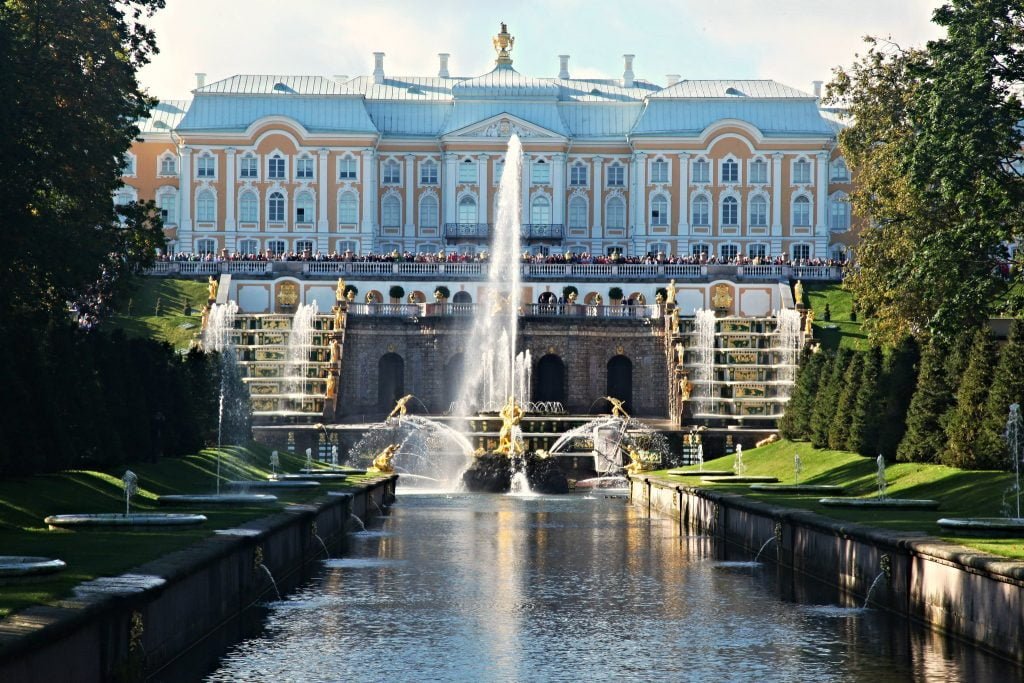
Frequently Asked Questions
Where is Peterhof Castle Located?
The palace is located in Peterhof in Saint Petersburg, Russia.
When was Peterhof Castle Built? Who Build It?
Peterhof Palace was built in the early 1700s. It was commissioned by Peter the Great and built by several architects over the years, including Trezzini, Le Blond, and Rastrelli.
When is The Best Time to Visit the Castle?
Seasonally, the best time to visit the castle is during summer’s warm months. However, visiting in May or September would be optimal to avoid the tourist season crowds, all the while enjoying the warm weather.
What Other Monuments are Located Nearby?
Other monuments in Saint Petersburg include the Monument to Peter the Great and the Cathedral of Saints Peter and Paul.
FOR HISTORY | BEAUTIFUL IMAGES | INTERESTING FACTS | TRAVEL TIPS
Early History
Construction and Early Years (18th & 19th Centuries)
The palace construction began in the early 1700s after Peter I of Russia started the development of St. Petersburg as his new capital. He wished to modernize the empire and bring it into parallel with the great European powers and to construct a palace that could compete with the Palace of Versailles constructed by Louis XIV in Versailles, France. It was in 1714 that Peter commissioned the construction of the first palace in the complex- the Monplaisir Palace. A lot of the palace’s architecture and design was based on Peter’s own drawings and concepts. He established the place as a summer retreat for himself.
Between 1745 and 1755, several wings were added to the palace, the construction of which was undertaken by renowned Italian architect Rastrelli under the reign of Peter’s daughter, Elizabeth of Russia. The Grand Cascade, an elaborate collection of waterfalls, fountains and gilt statues, was founded around this time. Though it was much simpler and sparsely decorated in the early years.
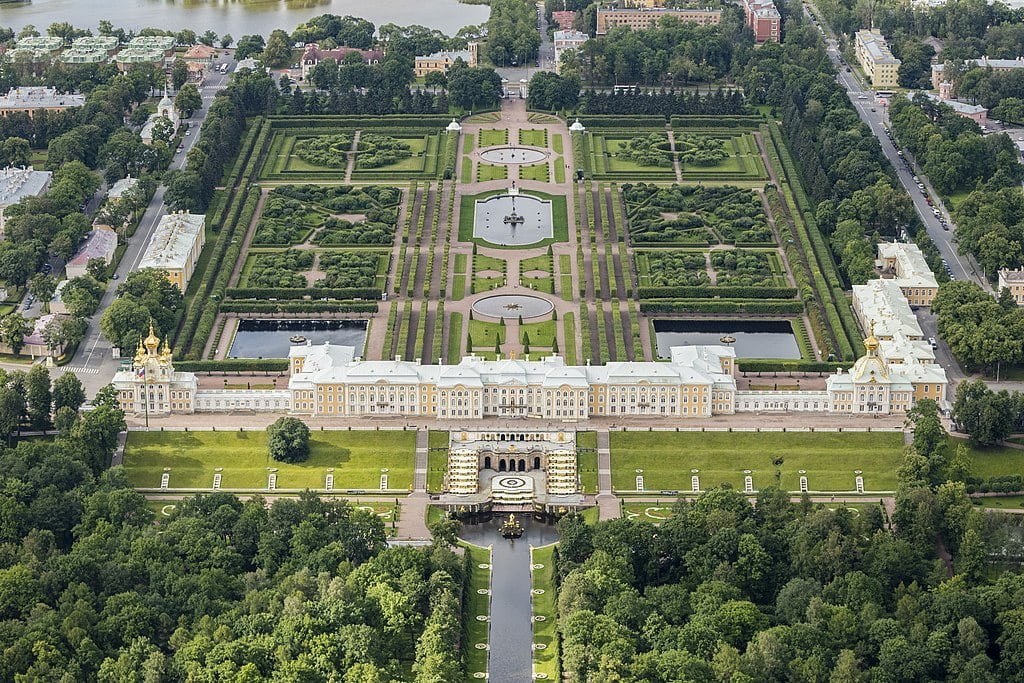
It was in the 19th century that several more fountains were added to the complex, and Peterhof’s original fountains were modified. Inspired by the Palace of Versailles, the Tsars continued to expand the complex with the addition of palaces and parks, which amounted to Peterhof Palace as we know it today.
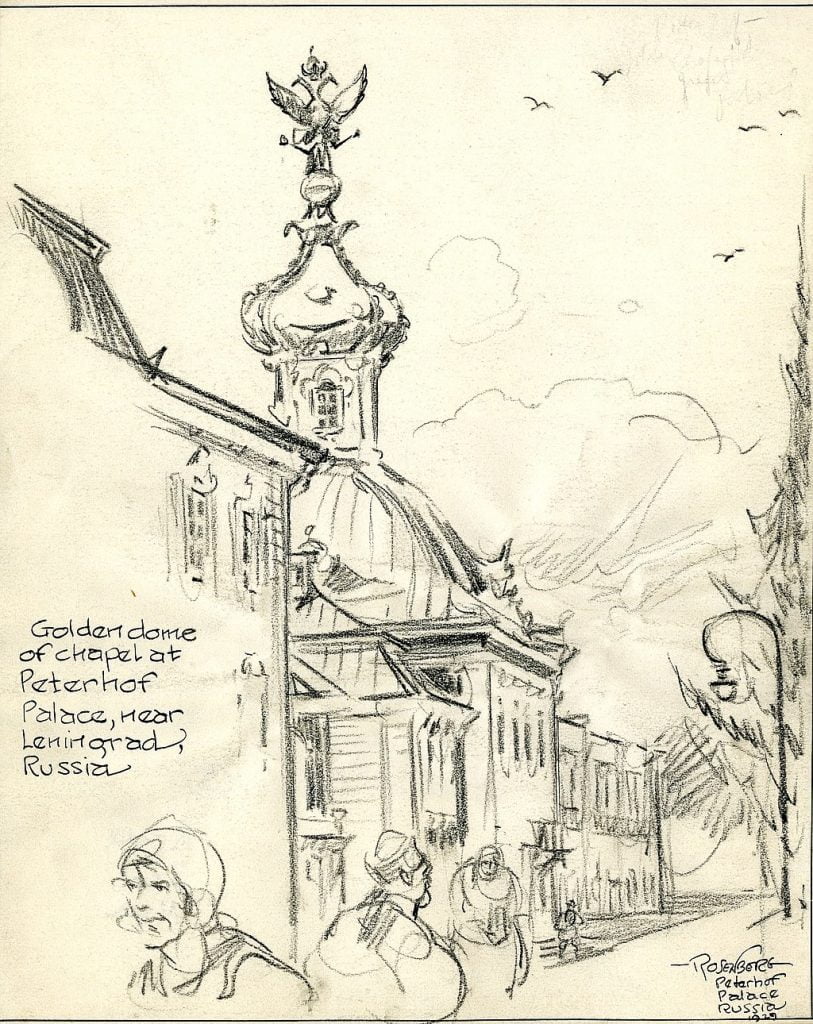
German Occupation (20th Century)
In 1941, during the second world war, Peterhof came under occupation by German troops. The grand estate remained under occupation for 3 years. In the months between the invasion and the military takeover, the palace’s stakeholders attempted to save the valuable treasures and fountains of the palace. Still, they could only salvage parts of them. They even tried to take apart and bury the sculptures, but most of them had to remain in their place.
After two weeks of German occupation, on the 5th of October, Soviet troops attempted to reclaim the town and obstruct the highway with naval ships. They posted 510 marines of the Soviet Baltic Fleet on the beach of the Park of Alexandria. However, they were met with an attack of heavy firing from the German army. The commander who led the operation was shot dead in the conflict while the Soviet troops became disorganized, which resulted in one landing craft being sunk.
Due to a lack of coordination among the troops, they met with failures and could not even evacuate as the Germans carried out a heavy artillery shelling operation. Only one Marine could be rescued. Some of the landing troops managed to reach the lower gardens of the castle and attempted to fight hand to hand – but to no avail.
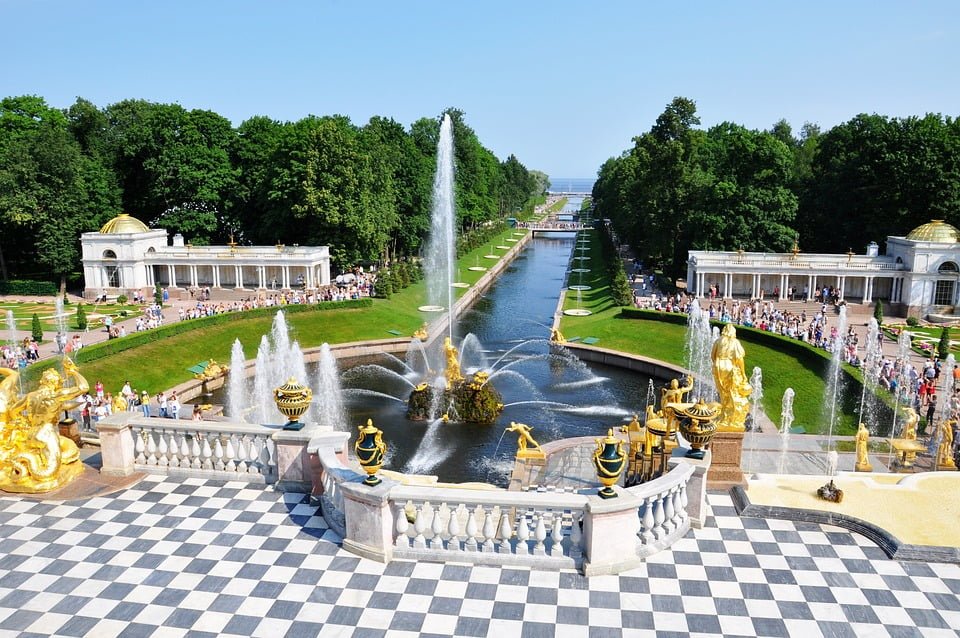
The last Soviet resistance was crushed on the 7th of October, and the German troops released dozens of German Shepherd dogs into the gardens to hunt out the retreating Marines. Many of them were killed by the dogs, while others were imprisoned. Later, in 1980, a memorial was constructed in the Lower Gardens to commemorate the attempt.
Revisit More Historic Places Below or Read Further
Current Times
German occupation left Peterhof largely destroyed. Restorations were started immediately. The Lower Gardens were reopened to the public in 1945. In 1944, the name of the palace was temporarily changed to Petrodvorets before being changed back. In 2003, the 300th anniversary of St. Petersburg was celebrated. Many of the structures and sculptures of the castle were hastily restored for the anniversary.
Currently, the castle is open as a museum for public access and guided tours. Hundreds of people visit each day to explore the extravagant palaces and their lush surrounding gardens.
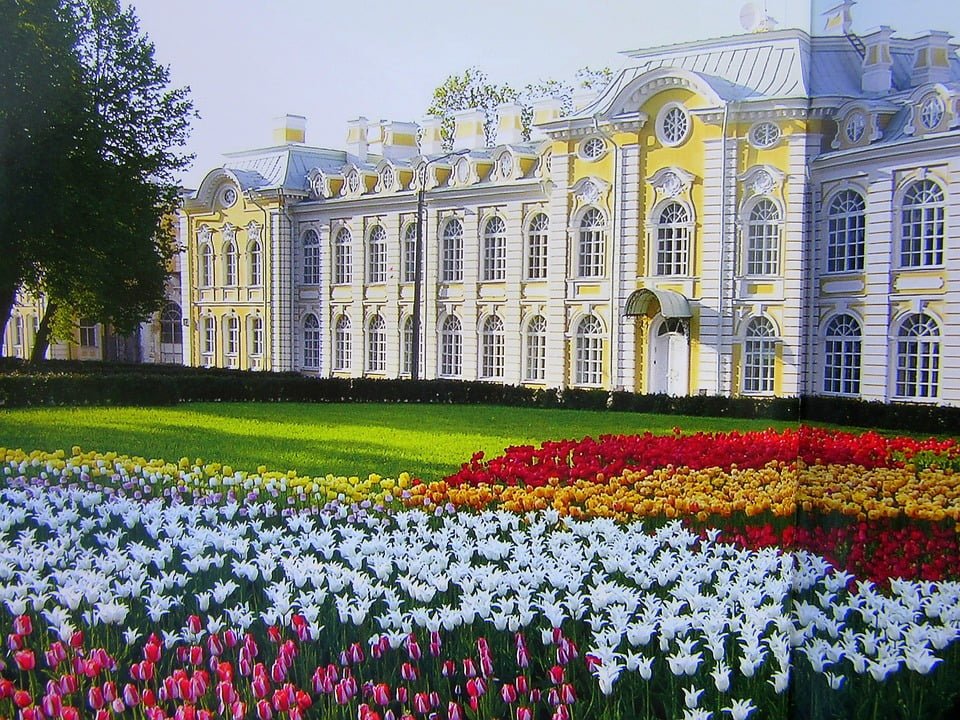
Interesting Peterhof Castle Facts
- The palace was temporarily named Petrodvorets after the German invasion left Russians with a strong anti-german sentiment.
- The sea battles have been artistically documented in paintings by the popular Russian painter Ivan Aivazovsky, and are on display inside the palace.
- Much of the palace was burned and exploded during the German occupation and had to be restored over decades.
- Aside from being a direct response to the Palace of Versailles, the palace was constructed as a symbol of the Soviet claim to the Baltic Sea and Russian modernization.
- French architect and garden designer Jean-Baptiste Alexandre Le Blond was picked to design the gardens of the palace, and it is speculated that he was chosen due to his connection with Versailles gardener Andre Le Note.
- The palace is also called the ‘fountain capital’ of the country.
- A lot of the restoration work was carried out by Elena Kalnitskaya, an art historian who has been serving as the Director General of the museum since 2009. She carried out large-scale projects in the parks and palaces, bringing them up to the caliber they display today.
Visiting Peterhof Castle – Tips and Tricks
Peterhof Palace is one of the most mesmerizing places in Russia. It’s not only brimming with history but is also a place where you could go and enjoy a peaceful day by yourself. If you’re planning a visit, here’s some helpful information:
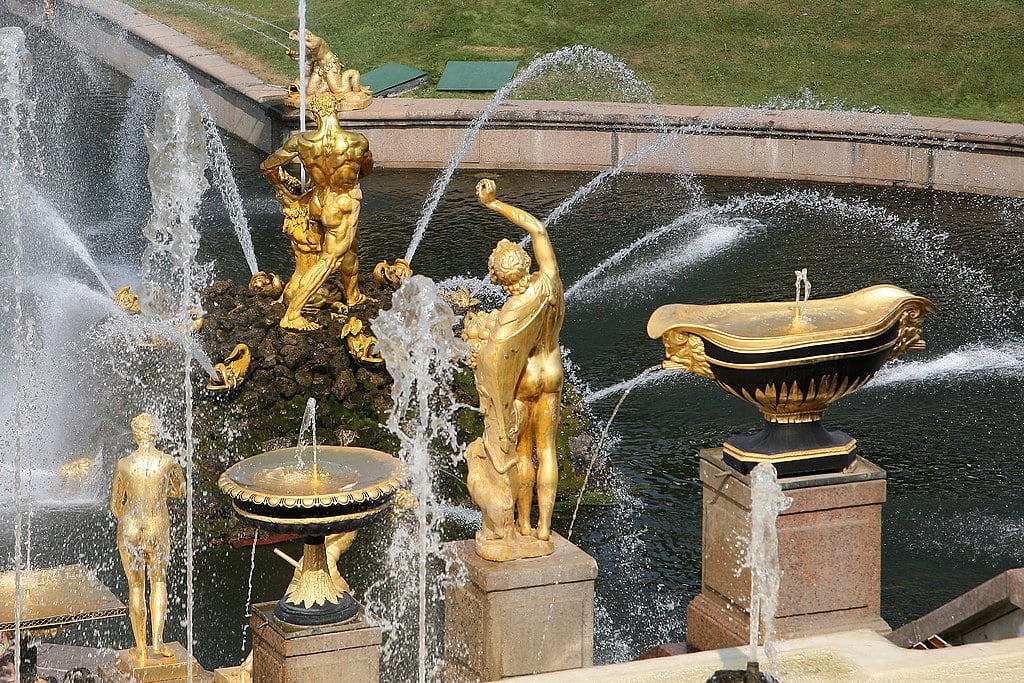
How to get to Peterhof Castle?
To get to Peterhof Palace from Moscow, you can simply take the train the whole way, or fly and then take a train.
Taking the train and riding the hydrofoil is the most recommended way. You will board the train from Moscow and get off at Saint Petersburg Glavny after a four-hour ride. From there, you take the metro to the Central Pier, where a ferry leaves every 30 minutes. The ferry will take you to Peterhof in 40 minutes while you enjoy scenic views and enjoy traveling above the serene waters of the Baltic Sea. The journey will take 5 and a half hours and cost you between €43 and €60 ($42-$59 USD).
The other method is via train. It is the cheapest but will take you the longest. You take the train from Moscow to St. Petersburg’s Finlyandsky Station, from where you board the subway to Avtovo. From Avtovo, you take the Metro all the way to Pravlenskaya Ulitsa, from where the palace is a 10-minute walk. The journey will take you 11 hours and will cost you between €27 and €48 ($27-$47 USD)
Alternative Methods
A third way to get to the castle is by flying to Pulkovo and then taking the metro to Leninskij Prospekt station. From there, you take the train to New Peterhof station and catch the metro to Pravlenskaya Ulitsa. From there onwards, the castle is a 10-minute walk. The journey will take you a little over 5 hours and cost you between €35 and €272 ($34-$276 USD). This is the fastest method of getting to the palace but it may cost you the most.
Another way you can get to the palace is by driving to the site via a rented car. The journey will take you almost 7 and a half hours, and you can have a comfortable journey at your own convenience and pace. The estimated fuel expenses for the journey are between €59 and €85 ($58-$83). You can rent a car for costs as low as €90 ($88 USD) per day, with options for free cancellation and payment upon pick up.
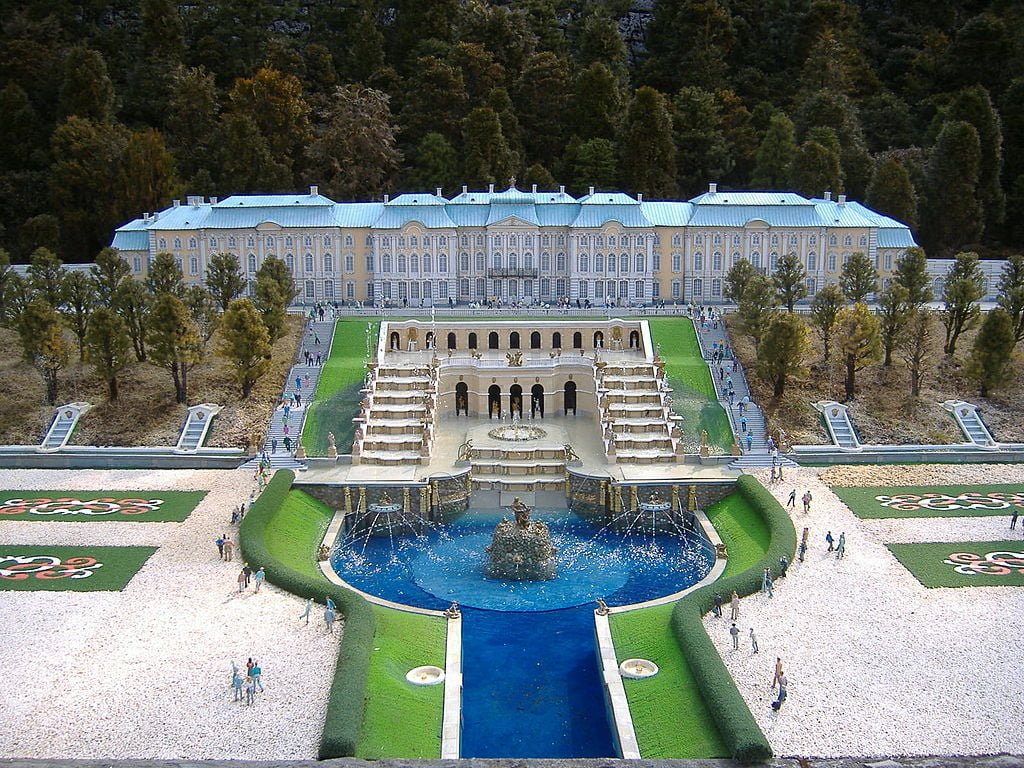
Ticket Prices, Visiting Hours & Travel Tips
Information was checked & updated on November 5, 2023.
Admission tickets cost 1500 rubles ($16 USD) for citizens above the age of 18. For students in Russia between the age of 14 and 18, the ticket costs 600 rubles ($7 USD).
Children under 7 can enter for free. War veterans, State Museum-Reserve guests, and national heroes can also enter for free. Children who are Russian nationals under the age of 14, disabled people, museum employees, pensioners, and students of basic professional education courses who can present IDs can get free admission.
The museum is open every day from 10:30 in the morning to 7:00 in the evening aside from Mondays and the last Tuesday of every month when it is closed down for cleaning and maintenance. Timings may vary for each part of the palace, so it is recommended to check the official website before your visit.
It is also recommended to check the event calendar available on the official website to correspond your visit with exciting events taking place at the castle. Noteworthy events include the Annual Spring Fountain Show and the Autumn Fountain Show, which occur at the Grand Cascade annually.
How Long Will It Take to Tour Around?
The complex is quite large, with multiple monuments and gardens to tour, so at least 2-3 hours are required to explore the area fully.
Up to Date Information
For up to date ticket prices and visiting hours visit the official website: https://en.peterhofmuseum.ru/
Some words of advice and tips:
- If you find long walks tiring or are accompanied by aged or handicapped people, you may rent an electric car to tour around the complex.
- There are no food outlets available in the complex so it is recommended to take food and water along.
- Guided tours in English are not available so you may want to take an interpreter if you wish to take one.
- The most aesthetically mesmerizing way to get to the castle is by taking the speedboat from St. Petersburg center but it is only available between May and October.
- If you tend to get seasick, avoid the speedboat/ferry and take the train to get there.
- Make sure to take a tour of the Grand Cascade to enjoy the mesmerizing fountains for which the palace is famous.
- Pets are not allowed inside the palace complex.
- Walking on the grass, picking flowers, and riding a bicycle on the property are prohibited, so be wary.

